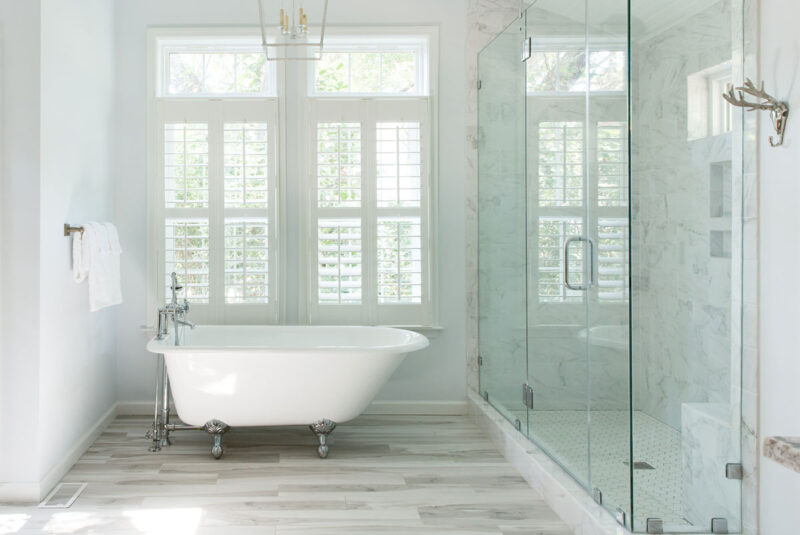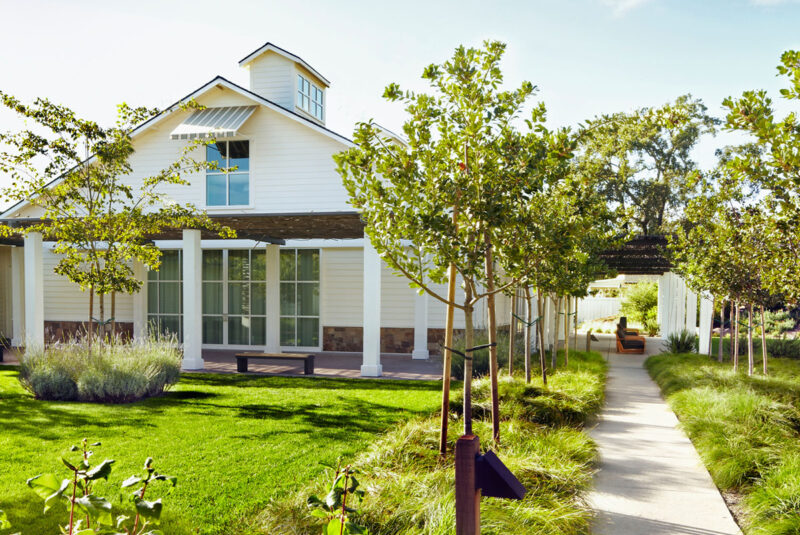Ready To Buy a Home?
Get Approved to Buy a Home
Rocket Mortgage® lets you get to house hunting sooner.
What comes to mind when you try to imagine what a manufactured home looks like? If you’re seeing a trailer home in your mind – think again. Manufactured homes have come a long way in the past few decades.
Modern manufactured homes are beautiful, sturdy and packed with creature comforts. They are ordinarily less expensive than traditional homes and are faster to construct.
If you’re in the market for a new house, manufactured homes are certainly worth considering.
Could a prefab home be right for you? Let’s dive into the pros and cons of manufactured homes so you can make an informed choice.
What Is a Manufactured Home?
A manufactured home is a house that’s built in a factory, transported in one or more sections and delivered to a home lot to be assembled on-site. Manufactured homes must follow the Manufactured Home Construction and Safety Standards from the Department of Housing and Urban Development (HUD).[1]
Modern manufactured homes can qualify as primary residences as long as they meet the size requirements of your local building code.
You can install manufactured homes on a piece of private property (or buy a lot in a designated manufactured home community) and connect utilities, just like you would with a traditional home (aka stick-built house).
Manufactured homes are ordinarily built in factories. The factories are typically large, open warehouses with high ceilings and a variety of workstations. Employees build multiple homes at once, usually working in stages.
While some workers are constructing the floors, others assemble walls in a different part of the factory. Every facility has ceiling-mounted lifts that can move each unit safely between stations and onto a truck.
When the home is done, the company transports it to your property and anchors it to the foundation. Depending on where you live, this might be a concrete slab, a pier-and-beam foundation, a basement or a crawl space.
Manufactured homes eliminate many of the expensive variables that often come with a traditional build. Because the homes are constructed indoors, manufacturers can avoid delays due to weather.
Most manufactured home manufacturers use a standard set of floor plans, so there’s no need to bring in an architect and designer for every project. But, the assembly line process doesn’t mean you have to settle for a cookie-cutter house. Most builders allow you to infuse your sense of style into the interior and exterior finishes, but your choices will be limited to the materials manufacturers keep in-house.
On the upside, you’re less likely to be affected by supply chain issues and material shortages.
What’s the Difference Between a Mobile Home vs. Manufactured or Prefab Homes?
The difference between mobile homes (a common term for manufactured homes built before 1976) and modern manufactured (or prefab) homes lies in the building code. Mobile homes are factory-built homes that were built before June 15, 1976.
Manufactured homes are factory-built homes that were built after June 15, 1976, and constructed under HUD’s Manufactured Home Construction And Safety Standards, which lays out the rules companies must follow when constructing manufactured homes. These standards ensure that each element of the house is safe and sturdy, including:[2]
- Design
- Body and frame construction
- Testing
- Thermal protection
- Plumbing
- Heating, cooling and fuel burning
- Electrical
Manufactured mobile homes are no longer in production. Today, there are four primary types of manufactured/prefabricated homes:
- Manufactured homes: Manufactured homes are built on a steel frame and are entirely completed in a factory. They usually feature single-story designs and simple rectangular shapes for easy transport and on-site assembly.
- Modular homes: Modular homes are built in sections in a factory, but they use traditional stick-built construction methods instead of steel frames. The manufacturer completes about 80% of the home in the factory, then they transport the sections to the home lot and complete the build on-site. Modular homes offer a wider range of design options, including multistory layouts.
- Panelized homes: With panelized homes (aka an open-wall package), the builder constructs the floor systems, wall panels and roof trusses in the factory. These sections are transported to the property, where a team assembles them and completes the build. Panelized homes offer nearly unlimited design flexibility.
- Kit homes: If you buy a kit home, you get packages of precut materials and building instructions. You or a contractor build the house on-site.
How Much Do Manufactured Homes Cost?
Prices for manufactured homes vary by where you live, how much space you want and the finishes you choose. According to the Census Bureau, the average cost of a manufactured home in 2021 was $81,700 for a single-wide home and $138,200 for a double-wide home.[3]
In the Northeast, Midwest and South, a double-wide manufactured home averages between $132,000 and $138,000. In the West, you can expect to pay more than $150,000.[3]
Keep in mind that these prices are for new manufactured homes. Once the home is built, you’ll also have to take associated costs – like buying property, getting a survey and preparing the site – into consideration. The lot will also need a foundation, driveway and utilities.
If this feels too expensive for your wallet, consider leasing a lot in a manufactured home community. You’ll pay a monthly fee, but it will include infrastructure and maintenance. Because you won’t have to borrow money to buy land, this option can also make it easier to get the manufactured home financed.
Once you’ve purchased land, your best bet is to go straight to the manufacturer. They can walk you through the process, from selecting a floor plan to getting permits and scheduling a contractor to build the foundation. Most manufacturers adjust their build type to accommodate the climate and wind conditions on your property.
If you’re looking to save some money, consider buying an existing manufactured home. Talk to a real estate agent to find manufactured homes for sale or look for manufactured home communities in your area.
What Financing Is Available for Manufactured Homes?
In comparison to stick-built homes, financing options for manufactured homes are limited. As with any loan, it’s important to shop around to find the best terms when shopping for manufactured home loans. Typically, you’ll get lower interest rates if you have a low debt-to-income (DTI) ratio, a high credit score and a sizable down payment.
Some manufacturers offer in-house financing. It’s like buying a car – you apply for a manufactured home loan with the manufacturer you buy the home from. This may be a convenient option, but you aren’t necessarily guaranteed the best interest rates.
Here are several ways to get financing for a manufactured home:
- Chattel loans: A chattel loan is a mortgage on a property (like a manufactured home) that can be moved. In comparison to traditional mortgages, chattel loans have shorter repayment terms, higher interest rates and lower borrowing limits.
- Conventional loans: Some lenders offer conventional mortgages for manufactured homes. To qualify, the home must have a permanent foundation and meet minimum size and age requirements.
- Personal loans: If you meet lender requirements, you may be able to qualify for a personal loan to buy a manufactured home. The interest rates and loan amounts vary, but the application process is easy, and the money arrives quickly.
- FHA loans: If you can’t get approved for a conventional home loan, Federal Housing Administration (FHA) loans are an option.
If you’re struggling to find a loan for a manufactured home, it’s worth considering other types of housing. Because traditional homes tend to appreciate in value, banks offer more financing options.
What Are the Pros and Cons of Manufactured Homes?
Like any house, manufactured homes have advantages and disadvantages. As you decide between manufactured and traditional properties, make sure to consider how it will affect your choices, timeline and finances.
Manufactured home pros
- Typically more affordable than stick-built, modular and panelized homes
- Faster construction process
- Quick on-site assembly
- Meets government safety and construction standards
- Rigorous quality control
- Many models surpass local building codes
- Options for sustainability and energy efficiency
- Flexible foundation options
- Often available with long-lasting warranties
- Can be placed on private or leased land
Manufactured home cons
- Limited financing options
- May have high delivery fees to rural areas
- Floor plans are limited by transportation requirements
- Fewer options for customization
- May depreciate in value
Is a Manufactured Home Right for You?
If you want a new, semi-customized house for less than what it costs to build a traditional home, a prefab unit could be the way to go. If your priority is space or custom design, the limits of a manufactured home might not work for you.
We walked you through the steps of purchasing a manufactured home, but remember, the first step is to take an honest look at your priorities and your finances.
Take the first step toward buying a home.
Get approved. See what you qualify for. Start house hunting.
The Short Version
- Manufactured homes are built in a factory and delivered to your home lot
- These homes are built efficiently, so they’re usually cheaper than traditional properties
- Financing options for manufactured homes may be limited, particularly if you have a low credit score or a small down payment
U.S. Department of Housing and Urban Development. “Manufactured Home Construction and Safety Standards.” Retrieved March 2022 from https://www.hud.gov/program_offices/housing/faqs_mhcss_3rd_set_final_rule
National Archives and Records Administration. “eCFR: 24 CFR Part 3280 — Manufactured Home Construction and Safety Standards.” Retrieved March 2022 from https://www.ecfr.gov/current/title-24/subtitle-B/chapter-XX/part-3280
U.S. Census Bureau. “MHS Latest Data.” Retrieved March 2022 from https://www.census.gov/data/tables/time-series/econ/mhs/latest-data.html




